How far has “Hydrogen Energy” spread in 2019?
(in provisional translation)
(English ver.) 2019-12-13
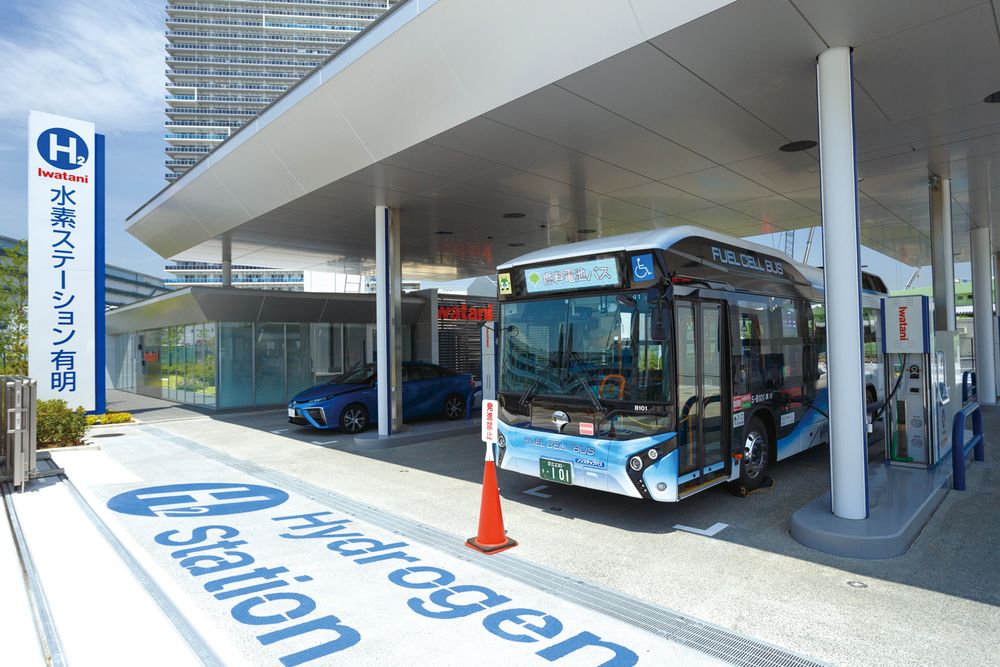
Hydrogen station (picture provided by Iwatani Corporation)
As outlined in a previous issue, hydrogen energy has two outstanding characteristics. First, it can be made from various resources. Second, it does not emit CO2 while being utilized as energy. Its current applications include the fuel cell vehicle (FCV) and the fuel cell for domestic use called Enefarm, which supplies homes with both electricity and heat created by the chemical reaction between hydrogen and oxygen contained in the air. Thus, it is expected to be a next-generation source of energy. This issue introduces facilities where you can directly feel the potential of hydrogen energy, and also highlights the state of affairs at the recent “Hydrogen/Fuel Cell Exposition (FC EXPO)” where various hydrogen-related companies gathered in one place.
Fuel cell busses and hydrogen stations are gradually increasing in the Tokyo Metropolitan area.
Hydrogen-powered “fuel cell vehicles (FCV’s)” and “fuel cell busses (“FC busses”) fall into one kind of electrified vehicles (xEV’s). Japanese car makers and parts suppliers have embarked on the development and manufacture of FCV’s and FC busses. The Transportation Bureau of the Tokyo Metropolitan Government has already introduced some FC busses, on which you can experience a silent, comfortable ride.
Indispensable to hydrogen-powered vehicles are “Hydrogen stations” where those vehicles can be filled up with hydrogen, similar to how petrol stations service conventional vehicles. 103 such stations were in practical use nationwide as of the end of March 2019.
A hydrogen station is equipped with devices such as a dispenser with a nozzle to supply hydrogen to vehicles, a pressurized vessel to contain hydrogen, a compressor to boost its pressure to an adequate level, and a pre-cooler to cool hydrogen. Some stations have hydrogen producing devices. It takes only about 3 minutes to fill up a vehicle with hydrogen; no more than the time required to fill up a conventional vehicle with petrol.
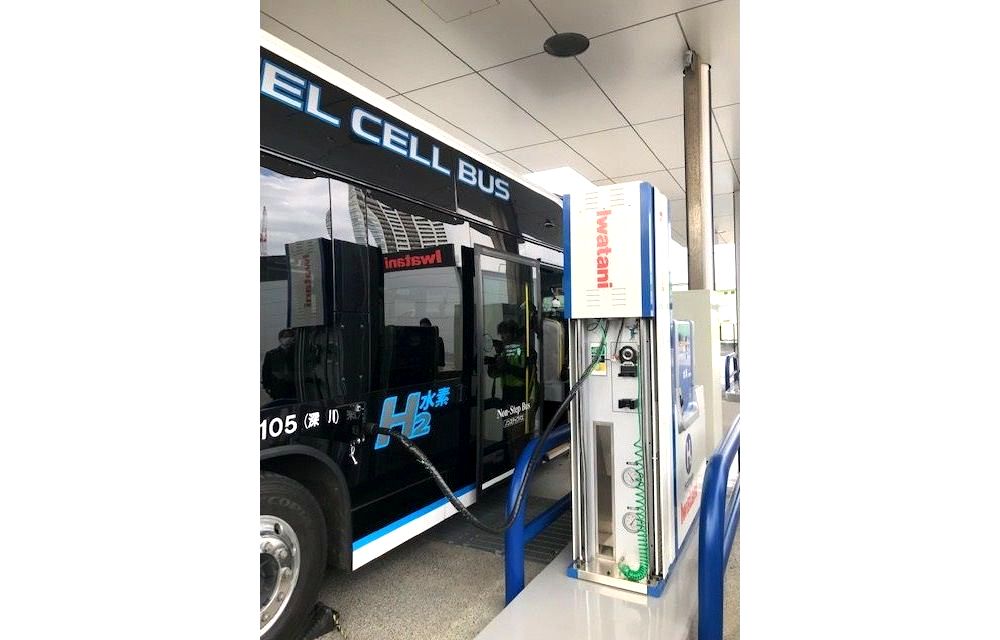
An FC bus being filled with hydrogen at a hydrogen station
At first glance, there seem to be no substantial differences between hydrogen stations and petrol stations. However, one big difference to be noted is that at hydrogen stations, the staff are to fill up FCV’s and FC busses after making sure that safety is secured.
In accordance with the “Guidelines for Self-Service Hydrogen Stations” set out by the industrial organization in May 2018, FCV users are now allowed to self-serve their vehicles if they have completed the necessary security training and entered into a contract with the station operator.
Even remote monitored, unmanned hydrogen stations are now under consideration. Legal and technological challenges are being studied together with necessary safety measures so that such stations can be made operational by the time of the 2020 Tokyo Olympic and Paralympic Games.
The hydrogen/fuel cell exhibition to offer an overview of the frontier of hydrogen energy.
As hydrogen stations are increasing, hydrogen-related markets are now being boosted. The “Hydrogen/Fuel Cell Exhibition (FC EXPO)”, held at the Tokyo Big Site from February 27 to March 1, 2019, had a large number of related companies set up booths.
A variety of organizations gathered including: parts and materials suppliers; manufactures and service providers of equipment for assessment / measurement / inspection; manufactures of hydrogen production devices, hydrogen storage equipment, and fuel cell systems/products; and foreign companies and authorities of foreign countries.
Iwatani Corporation, which carries hydrogen production plants and hydrogen stations, displayed hydrogen filling devices for “Fuel Cell Forklifts”. Toshiba Energy Systems, which carries systems for energy-related businesses, displayed a model of the Fukushima Hydrogen Energy Research Field under construction in Namie Town, Fukushima Prefecture.
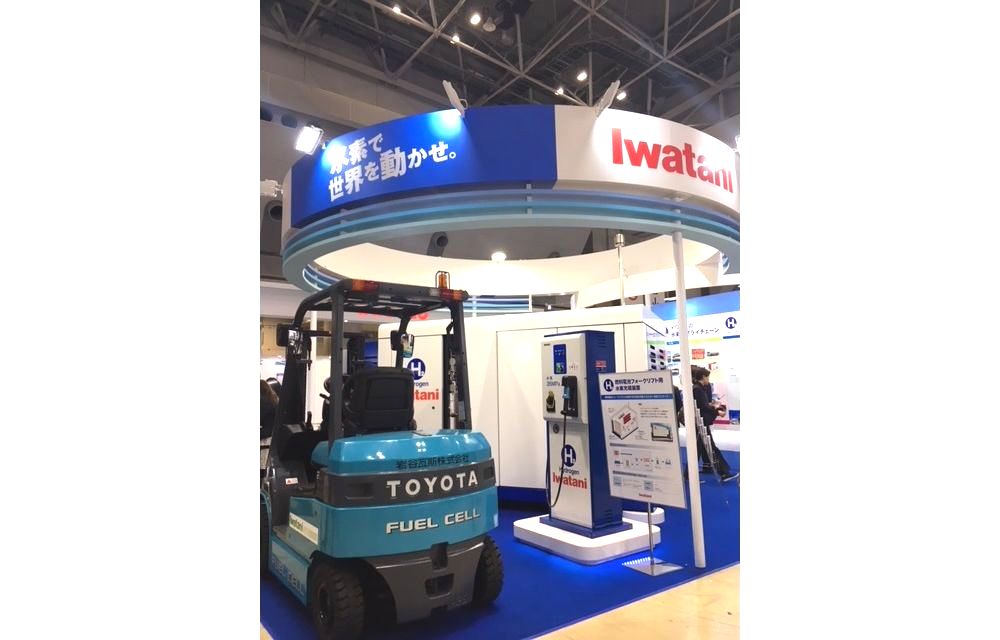
Hydrogen filling devices for fuel cell forklifts displayed by Iwatani Corporation
The “CO2-free Hydrogen Energy Supply-chain Technology Research Association (HySTRA)” which is comprised of several companies including Kawasaki Heavy Industries, launched a public relations campaign regarding the “Brown Coal to Hydrogen Project” now underway in Australia to demonstrate production/transportation/importation of hydrogen by utilizing brown coal (a type of coal with a high moisture content).
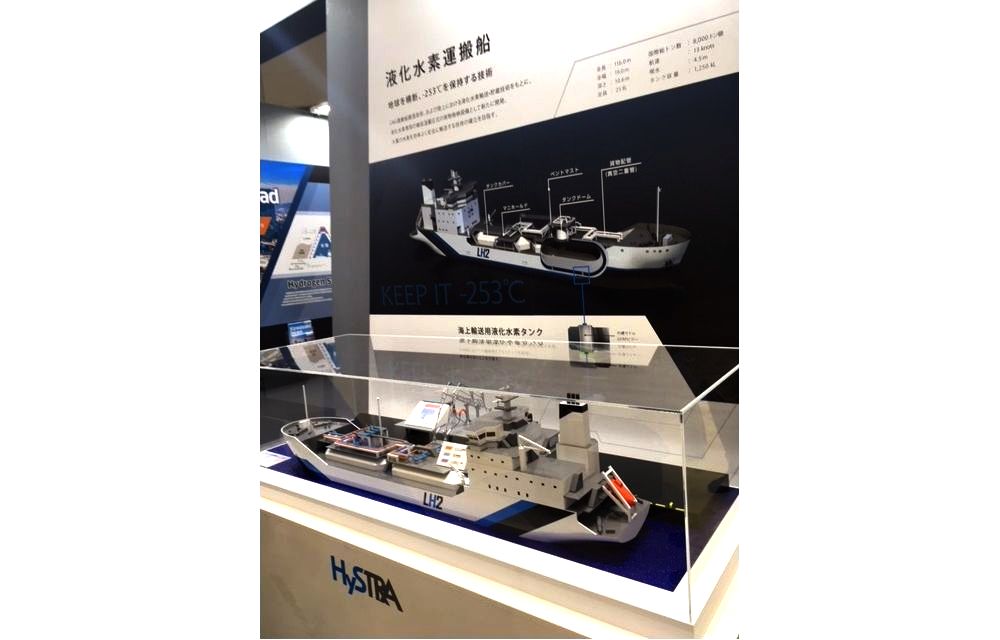
A model of a liquefied hydrogen carrier displayed by HySTRA
A number of car makers displayed their FCV’s. Fuel cell batteries for home use were also displayed. Thus, the FC EXPO offered an overview of the current frontier of hydrogen technologies. The FC EXPO is held twice a year in Tokyo and Osaka, alternately. The next one is to be heled in Osaka from 25-27 September 2019, and another in Tokyo from 26-28 February 2020.
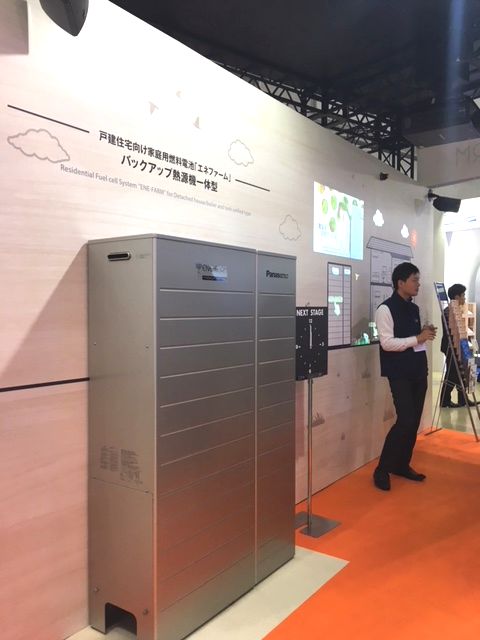
The newest type of Enefarm on display
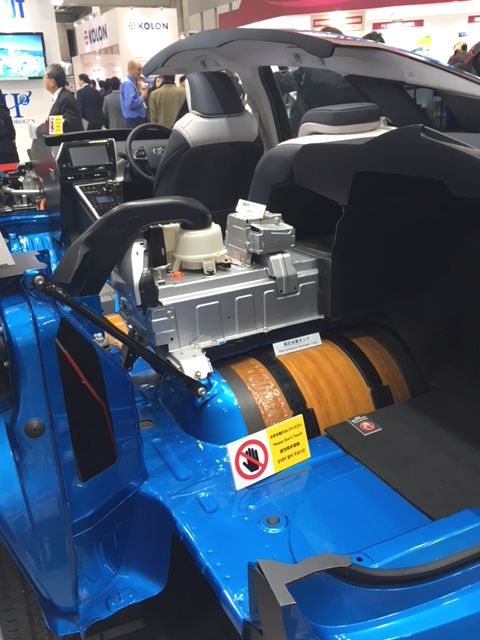
Inside of a fuel cell vehicle on display
Learn about hydrogen at the “Hydrogen Information Exhibition Hall: TOKYO SUISO MIRU”
Tokyo Metropolitan Environment Public Corporation, a public interest incorporated association, runs the “Hydrogen Information Exhibition Hall: TOKYO SUISO MIRU*”. It is an ideal place for people to learn about hydrogen energy. It offers a variety of displays with a concept of “seeing, touching and experiencing” of a future hydrogen society for visitors to understand how it will be significant and safe with an image of such a society.
*SUISO MIRU literally means “hydrogen seeing”.
Outside the building, a “MIRAI”, TOYOTA’s FCV, is displayed showing the potential of state-of-the-art technology of hydrogen energy. The first floor is comprised of six sections such as the “Potential of Hydrogen Energy” and the “Mechanism of a Hydrogen Society”. You can learn about hydrogen energy by experiencing events with popular characters and answering a quiz on the touch screen.
There is a notice board called “Hydrogen News” which carries the most up-to-date information about technological developments of hydrogen energy. In addition to the recent news, it also displays the roadmap to a “hydrogen society” developed by the Tokyo Metropolitan Government, which shows how our society will have changed when a hydrogen society is reached.
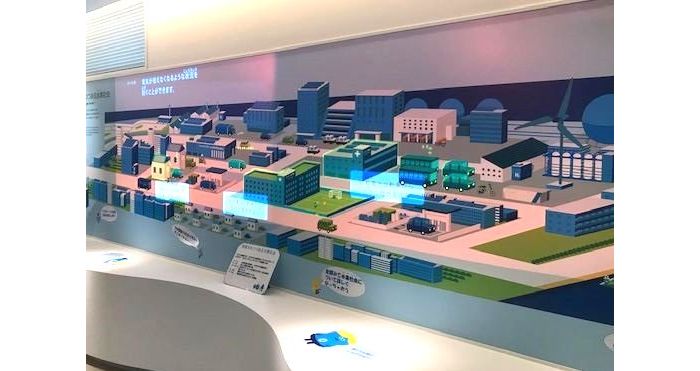
Display showing how hydrogen is used in town
On the second floor, there is a demonstration facility where you can experience filling a car with hydrogen with devices actually used at hydrogen stations. Companies conducting research and development of hydrogen energy set up their booths displaying their latest technologies and products.
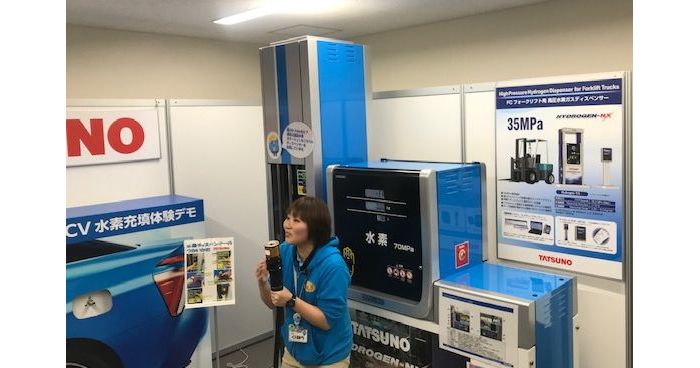
Demonstration facility where you can experience filling a car with hydrogen
There is an experimental facility to produce hydrogen by using a bicycle. Events are held almost every weekend. This exhibition hall offers opportunities for people, regardless of age, to directly feel the potential of hydrogen in various ways.
How about taking a hydrogen bus this weekend and feeling the frontier of hydrogen energy?
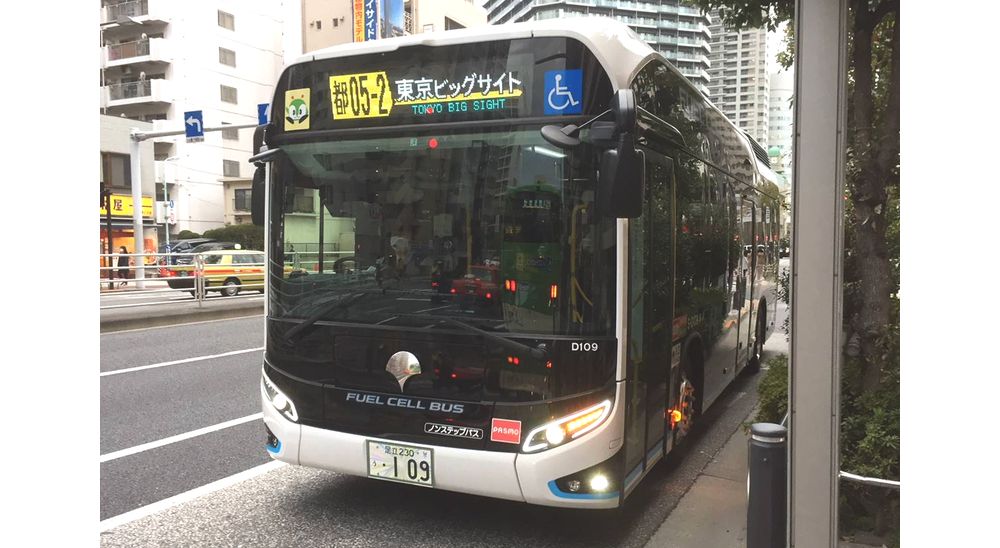
Division in charge
About the article
Coal Division, Natural Resources and Fuel Department
About Special Contents
Research and Public Relations Office, Policy Planning and Coordination Division, Commissioner's Secretariat